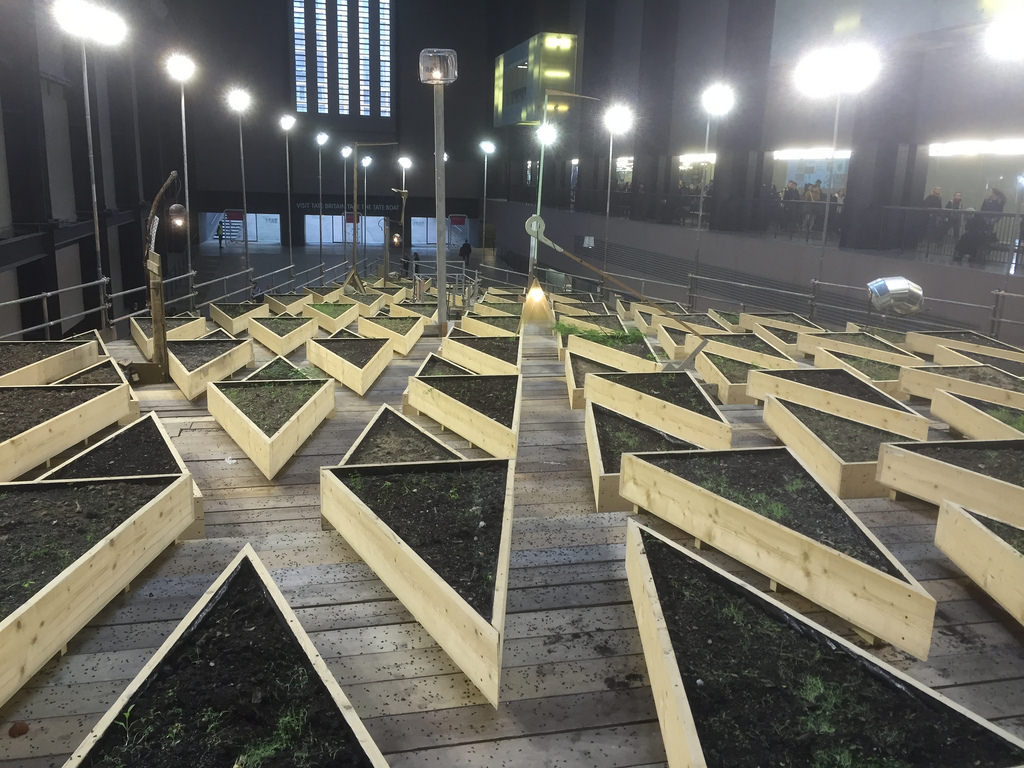At a first glance, the instillation sculpture appears as an abstract collection of meaningless triangular shapes.
The instillation in London’s Tate Modern – which sees a collection of triangular lots evenly spaced out upon the top of a scaffolded structure – is actually, as Mexican artist Abraham Cruzvillegas explains, an artwork about hope and chance. The work was created by the artist collecting soil from the major parks in London, and placing the soil in the triangular lots unaltered, with the watering of the soil being the only interaction with it.
At the time of installing and constructing the instillation work it was unknown to both artist and the viewers whether something would grow from any of the lots or not, with the work relying wholly on chance and the hope for growth.
This use of found materials and objects is described by the artist as autoconstruction, which he explains while talking to Fiontan Moran for the Tate Magazine. He explains this method of working as ‘almost in a childish manner’, questioning materials and spaces with often ‘chaotic’ results.
However, the work aesthetically is anything but chaotic- the rigid geometry of the triangular lots offers a balancing contrast to the unpredictable nature of the soil they hold. The nature of the artwork, Cruzvillegas expands, is reliant on ‘improvisation’- spontaneous chance within this organised structure.
The use of found objects is a theme within the work of Cruzvillegas; in his 2008 work entitled AC: Blind Self Portrait he appropriates envelopes, maps, postcards, napkins, pins and other seemingly random and commonplace items to create his artwork. However, Empty Lot takes this idea further still, by using materials that are completely natural and un-commodified.
Seeing the instillation in the fourth month of its six month cycle, which ends on April 3rd, it is clear to see that the premise of hope and chance has been successfully executed in this work. Small yet significant growths in many of the plots of the unaltered soil defy expectation and produce an image both profound and surreal.
The natural imagery placed within the context of the vast indoor space of the Turbine Hall of the Tate Modern leaves the viewer indecisive- is seeing this natural imagery in an unnatural indoor setting unnerving, or immersive? A strong case could be made that it is both.
The Telegraph described the sculptural instillation as a ‘living city of weeds’, embodying the idea that this work captures both the urban and the natural in equal and complimentary measure.
As any art review will tell you, this work has to be seen in the flesh to be truly appreciated. The lighting of the lamps interweaved throughout the space of the work, the ability to walk through and beneath the scaffolded structure – which the artist was keen to stress was part of the work and not simply a platform for the lots – all create an engaging and insightful appreciation for a work which otherwise sounds bizarre and underwhelming. However, rest assured, this is not the case when seen with your own eyes.
Sasha Khan

